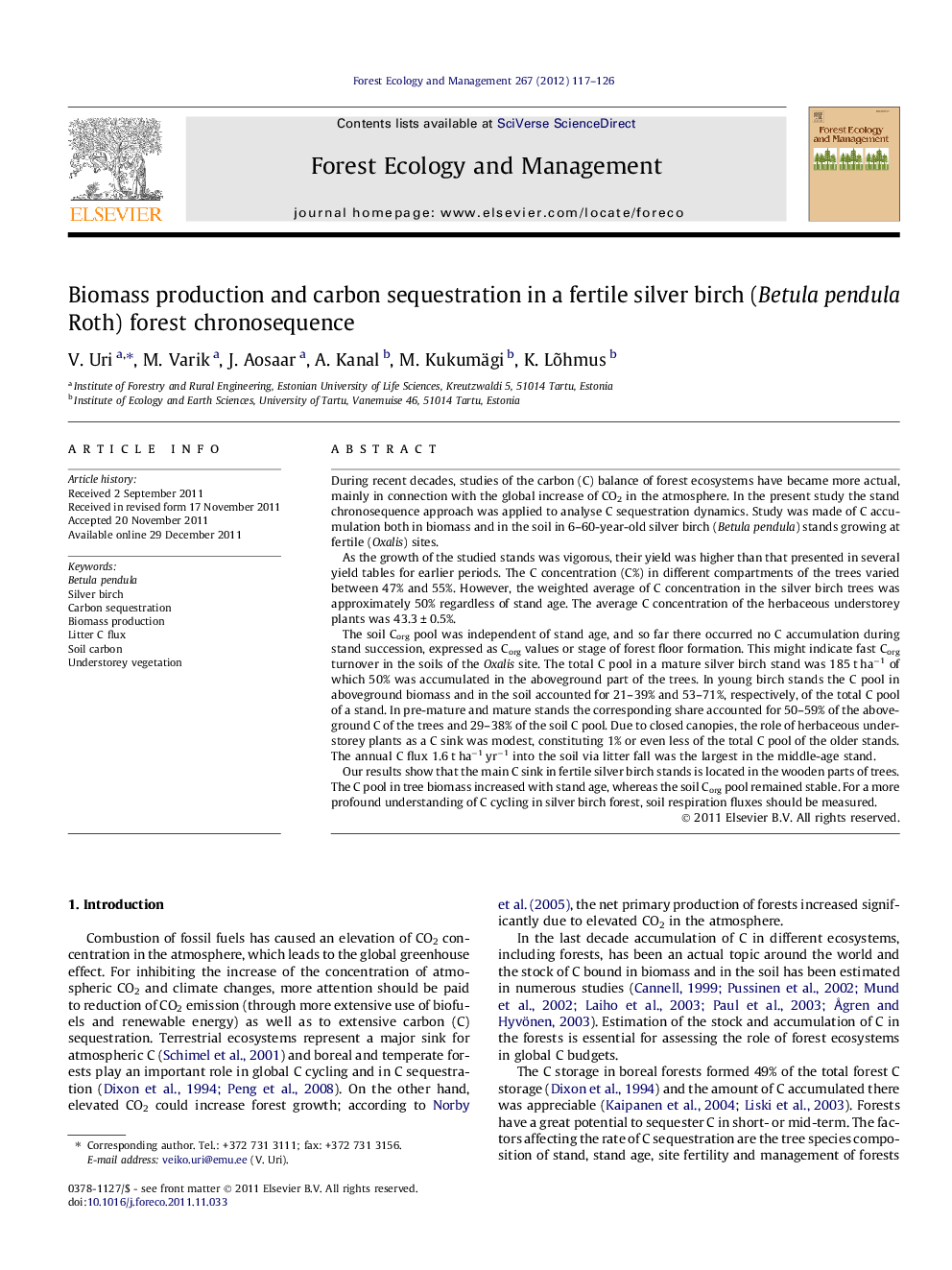| کد مقاله | کد نشریه | سال انتشار | مقاله انگلیسی | نسخه تمام متن |
|---|---|---|---|---|
| 87616 | 159258 | 2012 | 10 صفحه PDF | دانلود رایگان |

During recent decades, studies of the carbon (C) balance of forest ecosystems have became more actual, mainly in connection with the global increase of CO2 in the atmosphere. In the present study the stand chronosequence approach was applied to analyse C sequestration dynamics. Study was made of C accumulation both in biomass and in the soil in 6–60-year-old silver birch (Betula pendula) stands growing at fertile (Oxalis) sites.As the growth of the studied stands was vigorous, their yield was higher than that presented in several yield tables for earlier periods. The C concentration (C%) in different compartments of the trees varied between 47% and 55%. However, the weighted average of C concentration in the silver birch trees was approximately 50% regardless of stand age. The average C concentration of the herbaceous understorey plants was 43.3 ± 0.5%.The soil Corg pool was independent of stand age, and so far there occurred no C accumulation during stand succession, expressed as Corg values or stage of forest floor formation. This might indicate fast Corg turnover in the soils of the Oxalis site. The total C pool in a mature silver birch stand was 185 t ha−1 of which 50% was accumulated in the aboveground part of the trees. In young birch stands the C pool in aboveground biomass and in the soil accounted for 21–39% and 53–71%, respectively, of the total C pool of a stand. In pre-mature and mature stands the corresponding share accounted for 50–59% of the aboveground C of the trees and 29–38% of the soil C pool. Due to closed canopies, the role of herbaceous understorey plants as a C sink was modest, constituting 1% or even less of the total C pool of the older stands. The annual C flux 1.6 t ha−1 yr−1 into the soil via litter fall was the largest in the middle-age stand.Our results show that the main C sink in fertile silver birch stands is located in the wooden parts of trees. The C pool in tree biomass increased with stand age, whereas the soil Corg pool remained stable. For a more profound understanding of C cycling in silver birch forest, soil respiration fluxes should be measured.
► The main C sink in the fertile silver birch stands is tree biomass.
► The soil C pool did not depend on stand age.
► The average of C concentration in the silver birch trees was approximately 50%.
► The understorey vegetation contributed a minor part to total C accumulation.
Journal: Forest Ecology and Management - Volume 267, 1 March 2012, Pages 117–126